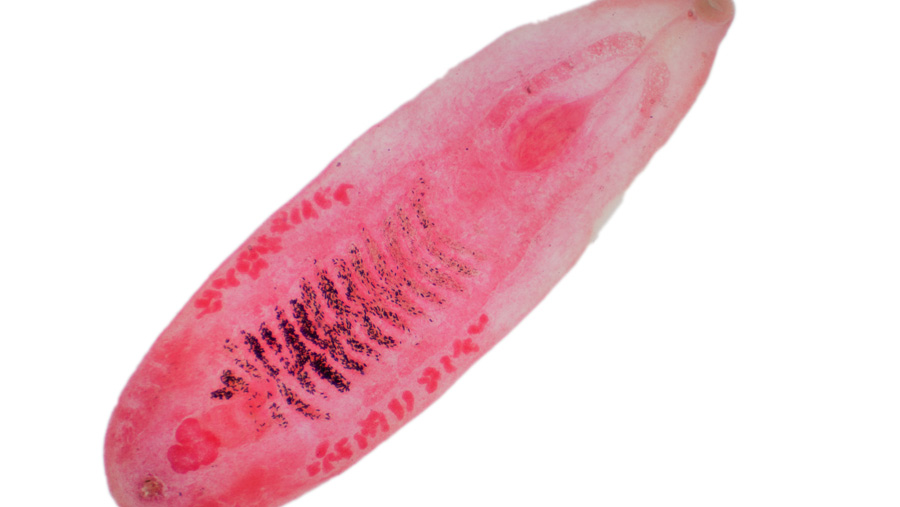Video: Fluke video gives powerful insight into parasite
 © Adobe Stock
© Adobe Stock A video documenting the different stages of the harmful liver fluke parasite has been made to help farmers understand its complex life cycle.
The video (below) shows the liver fluke (Fasciola hepatica) through all its growth stages, starting and finishing with the egg-laying adult.
It includes close-up action of the parasite living on pasture, residing in a mud snail and being grazed by the mammalian host.
Video courtesy The David Barlow Film Archive
See also: Liver fluke test advice issued amid rising cases
What are the stages of the liver fluke cycle?
In the mammal
- Adult fluke live in bile ducts in cattle and sheep as flatworms. They hold their position and move using suckers and spines
On wet pasture
- Adults produce millions of eggs, which pass through the gut and on to pasture, where they try to reach water
- Miracidia, or free-swimming larvae, develop in the eggs and hatch after about two weeks
- They are attracted to mud snails, which are commonly found on grassland
On the snail
- The miracidia attach themselves to the snails, shedding their outer layer and burying into their hosts
- Once inside the snail, the miracidia become sporocysts, which produce up to 4,000 cercariae – more free-swimming larvae
In puddles and on pasture
- The cercariae (which look like tiny tadpoles) emerge from the snail, swimming vigorously until they attach to a surface, when they shed their tails and form cysts
- The cysts wait until a mammalian host comes along and graze them
In the mammal
- Once eaten, metacercarial cysts, which carry juvenile flukes, are released
- Digestion activates these juvenile flukes, which have suckers and spines to work their way through the gut and liver to the bile duct. Here, they grow into adult flukes and complete their life cycle
Uploaded by the Control of Worms Sustainably (COWS) group, the video has been produced by parasitologist Clive Bennett and camera operator David Barlow, with help from Ridgeway Research.
Fluke forecast
A low-risk fluke forecast was issued by the Sustainable Control of Parasites in Sheep (Scops) in October following a dry, cool spring and some hot dry spells in summer for many farms.
However, fluke-positive sheep were confirmed in early July from serum antibody (blood) and coproantigen (faecal) tests.
Every farm’s risk is different, and testing, rather than guessing about whether to treat, is paramount, says Scops.
Farmers have three ways to do this:
- Dung sample and coproantigen test
- Serum antibody test
- Faecal egg counts (under microscope)
Liver fluke can cause significant weight loss and drops in performance in cattle and can be fatal in sheep.
Management
How to manage liver fluke in sheep
- Actives useful for stages of fluke in late autumn and winter are nitroxinil, closantel and triclabendazole
- An example treatment plan might be to drench with triclabendazole in low-risk years in October ahead of a predicted parasite challenge, followed by an alternative flukicide (closantel) administered in January
- In high-risk years a triclabendazole treatment may be necessary in September
- Spring treatments should be effective against adults only – check with your vet or suitably qualified person
How to manage liver fluke in cattle
- Where liver fluke is endemic, strategic flukicide treatments will be necessary. Talk to your vet
- Administering cattle with a fluke dose on housing can limit repetitive treatments and selecting for resistant strains
- During a low-risk year, treatment to kill mature flukes can be given to at-risk cattle from January
- In high-risk years, a treatment against immature fluke can be given at housing and again, if necessary, at least eight weeks after the first treatment
- Faecal samples can be analysed to confirm if treatment is necessary
- Talk to your vet about milk withdrawal periods and treatment timings
Source: NADIS
